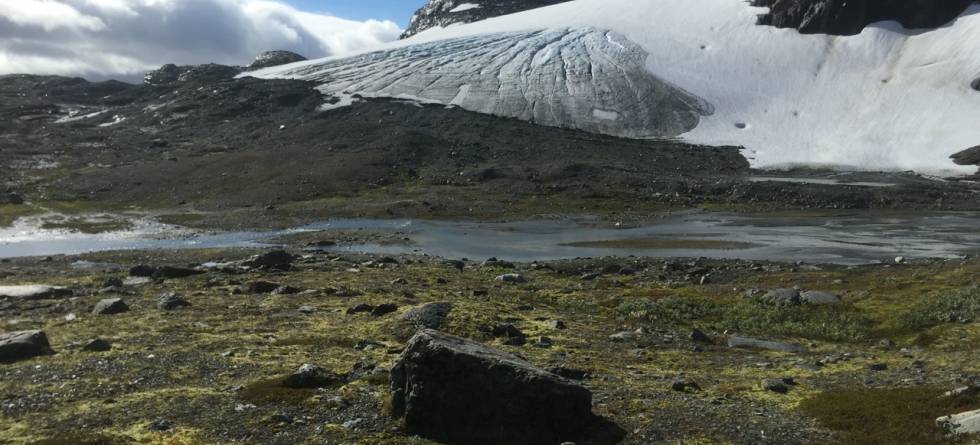The team of researchers from the Bjerknes Centre for Climate Research, the Netherlands and the US took a glance into the past to understand how the ice cap Hardangerjøkulen in southern Norway responds to climate change.
The authors simulated the history of the ice cap over the last 4000 years, from a period called the mid-Holocene, when summer temperature at high northern latitudes were two to three degrees warmer than today. Most if not all glaciers in Norway melted away during this period, Hardangerjøkulen included.
Hardangerjokulen from the past into the future from The Bjerknes Centre on Vimeo. Film and animation by Henning Åkesson
Henning Åkesson, a PhD candidate at the Bjerknes Centre and University of Bergen, used a glacier computer model developed at NASA-Jet Propulsion Laboratory and University of California, Irvine to simulate Hardangerjøkulen’s history. To inform model simulations, he used information on past climates and glacier variations from lake sediments receiving meltwater from the ice cap.

Contest between snow and snowmelt
“Present day Hardangerjøkulen is in a very vulnerable state, and our study of its history over the last several thousand years shows that the ice cap may change drastically in response to relatively minor changes in climate conditions”, says Åkesson.
Every year, snow covers a glacier in winter, and melts away to a varying extent the following summer. At a certain altitude on the glacier, the competition between snow accumulation and snowmelt is balanced; glaciologists call this the Equilibrium Line Altitude (ELA).
“What is special with Hardangerjøkulen and other similar ice caps”, Åkesson explains, “is their flat topography. Anyone skiing up Hardangerjøkulen to celebrate Norway’s national day on May 17th can testify; first it’s steep, but once you’re higher up things get a lot easier.”
A large part of Hardangerjøkulen’s area is close to the present ELA. This means that a small change in the competition between winter snow and summer melt will affect a very large part of the ice cap. Åkesson says “the topography and present climate is such that we soon expect yearly net melt over the entire ice cap. This has already happened a few times in recent years. In the near future we expect this to occur much more often, and with this, the demise of Hardangerjøkulen will accelerate.”
“Today the ice is more than 300 m thick at places, which may sound like a lot. But the implication of our study is that if climate warming continues, this ice cap may disappear before the end of this century. I don’t think most people realize how fast glaciers can change, maybe not even us as scientists,” says Åkesson.
Hydropower from glacier meltwater
“The economic and cultural implications of disappearing glaciers in Norway are considerable for tourism, natural heritage and the hydropower industry”, Kerim Hestnes Nisancioglu at the Bjerknes Centre, co-author of the study, adds.
Practically all of Norway’s electricity is generated from hydropower, of which 15 % depend on glacier meltwater. “The hydropower industry needs to plan for these changes, and we need to work together to find out how fast this transition will happen”, Nisancioglu says.
What is more, “if Hardangerjøkulen melts away completely, it would not be able to grow back again given today’s climate”, Åkesson concludes.
The study was published in the open-access journal The Cryosphere on January 27th. Read the full study here.
Reference:
Åkesson, H., Nisancioglu, K. H., Giesen, R. H., and Morlighem, M.: Simulating the evolution of Hardangerjøkulen ice cap in southern Norway since the mid-Holocene and its sensitivity to climate change, The Cryosphere, 11, 281-302, doi:10.5194/tc-11-281-2017, 2017

